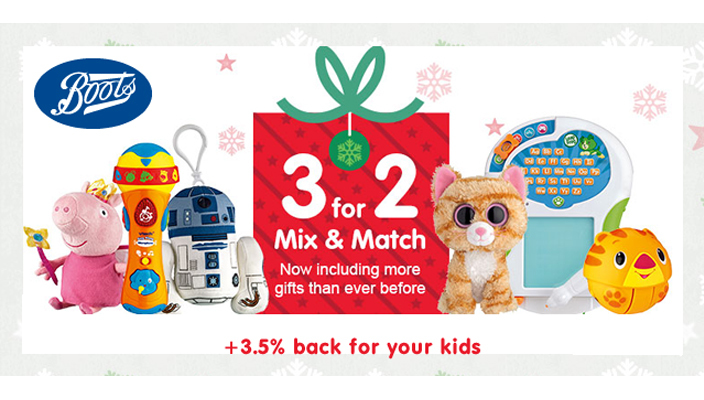Sometimes the world of children’s toys can be confusing as it is not always obvious which toys are suitable for which age group. Whether you are buying toys for your grandkids, children, nieces and nephews or the children of friends, multi-purchase deals are a fantastic way to go, especially if you know which age groups you need to buy for.
Boots currently have a 3 for 2 mix and match promotion that includes a wide range of carefully selected toys to suit all age ranges from birth.
This guide is designed to help you understand which kinds of toys are suitable for which age group.
From birth, babies can see bright colours and strong contrasts, but they can’t lift their heads until they are about three months old. Tiny babies can only see a distance about ten inches away with longer sight range developing later. In the first three months, babies grip things tightly if their palms are touched and they tend to dislike sudden, loud noises. Over time, babies develop the ability to turn their heads towards familiar sounds such as their mother’s voice and other interesting audio stimuli.
Newborns cannot move very much so this is the ideal time for activity arches and quilts. Soft toys are suitable from birth and this Lamb blanket and rattle is ideal for those early months. Young babies also love rattles and musical toys, especially items that can be fixed to cots, moses baskets and prams.

Boots Activity Arches and Quilts
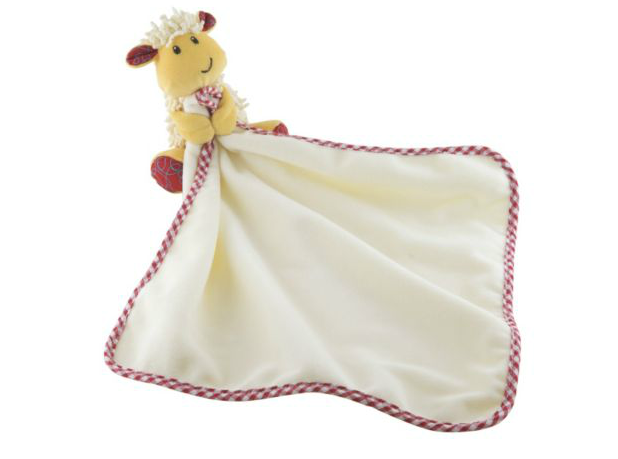
Boots Lamb Blanket and rattle
From 3 – 6 months, babies are much better at holding things properly with both hands as their hand to eye co-ordination develops. Their sight will have improved and they may be sitting up by the time they are half a year old. They start to recognise and distinguish between sounds such as the telephone, the doorbell and the kettle. At six months, babies may understand the word ‘no’ and be working hard to get people to understand them by trying out a different range of sounds from crying and gurgling to blowing raspberries (a favourite!).
This is a great time to buy teethers, rattles and other toys that babies can chomp down on. Any activity centers and multi-sensory toys will go down a treat for this age group as will any touchy/feely type toys. Any toy that offers audio and tactile stimulus like Little Singing Alfie is great news for the 3- 6 month age group.
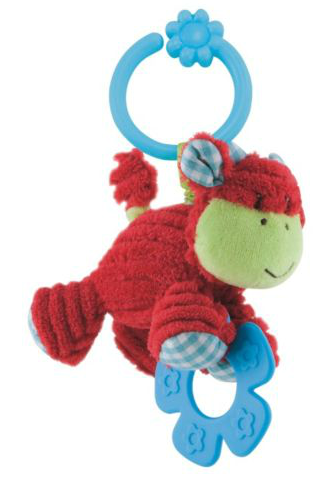
ELC Blossom Farm Clover Cow Jiggle Rattle at Boots
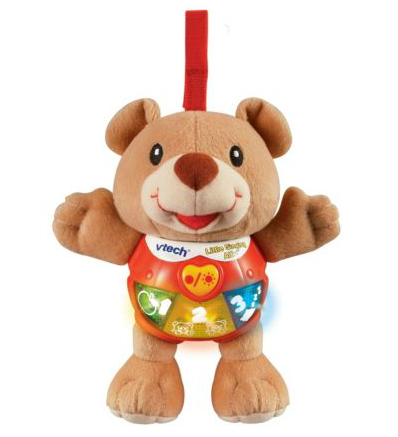
VTech Baby Little Singing Alfie at Boots
At around 6-9 months, babies will have well-developed sight and their range of sounds and early speech will be growing rapidly. They turn their heads directly towards any audio stimuli and may actually start crawling or bottom-shuffling towards anything that takes their interest. Their thumb control develops meaning they can hold things much more delicately, although more often than not, they like chucking it on the floor!
This is a great age for toys with lots of lights and sounds, especially musical toys. Babies of this age range will also start to appreciate construction toys and shape based toys such as this Cookie Shape Surprise, building blocks and stacking toys. Bath toys are also a good investment especially if they encourage water play. Bath books and fabric books are a great buy around now.
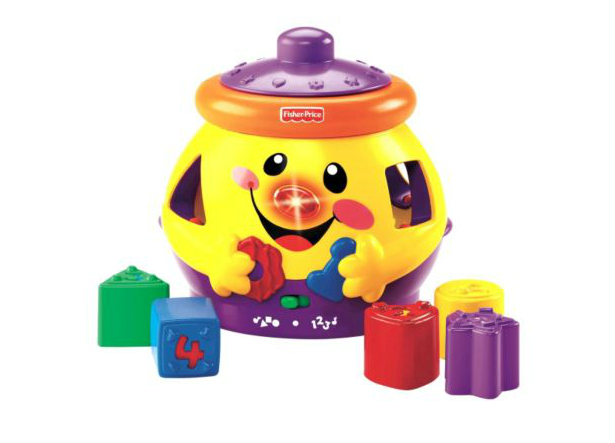
Fisher Price Cookie Shape Surprise at Boots
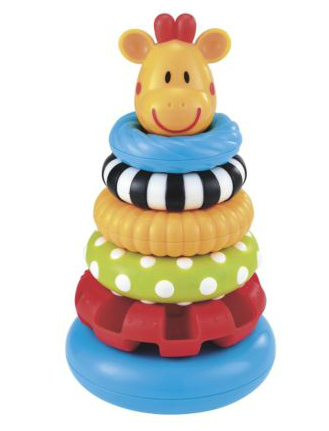
ELC Sensory Stacking Rings at Boots
From 9 months to 1 year old, babies may be moving from the crawling phase to attempts to stand up. They are strongly independent when sitting up, demonstrating much more flexibility by leaning sideways, backwards and forwards to reach things. There will be basic understanding of language such as ‘bath’, ‘milk’ and ‘bed’ and babies may also recognise their own name.
Toys that support babies efforts to stand and walk are perfect such as rolling toys, and walkers like this First Steps Babywalker. As babies develop a sense of familiarity, character toys that they recognise from books or television shows are also appropriate.
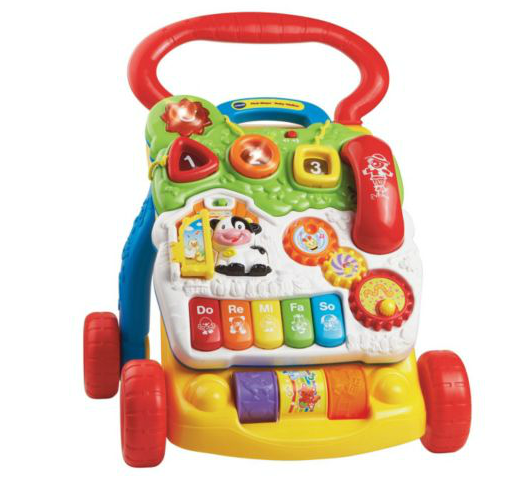
Vtech First Steps Baby Walker at Boots
There are huge developmental leaps during the first 1 to 3 years and children of these ages will be able to hold a crayon, kick a ball and have a rapidly growing vocabulary of words. They will be making full sentences by the time they are 3 years old. Towards the end of this stage, they may also become aware of when another child is playing with ‘their’ toys which calls for the rapid development of ’interesting’ negotiating skills for parents and carers! Toys that encourage sharing such as this tea party set are ideal for now.
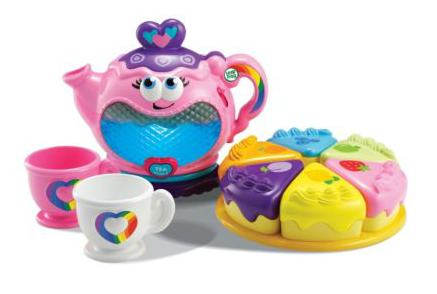
LeapFrog Musical Rainbow Tea Party at Boots
Between the ages of 4-6, children’s motor ability becomes strong and agile; they enjoy balancing on one leg, jumping and so forth. They may also be able to dress themselves so this is the perfect time for dressing-up boxes filled with clothes and other materials for imaginative play and storytelling such as puppets, dolls and characters.
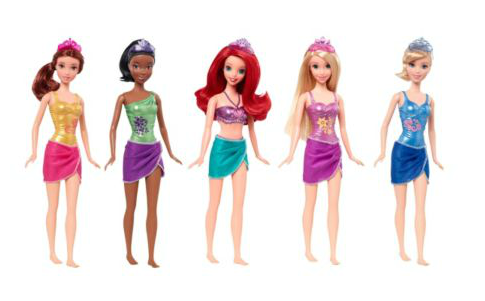
Disney Princess Bath Doll Assortment at Boots
At 6-8 years, children’s individual personalities really shine through. It is the time the training wheels come off bikes and playgrounds fill up with skipping ropes, scooters and footballs. Children may enjoy exploration type toys that reflect what they are learning at school such as science kits, memory games and puzzles.
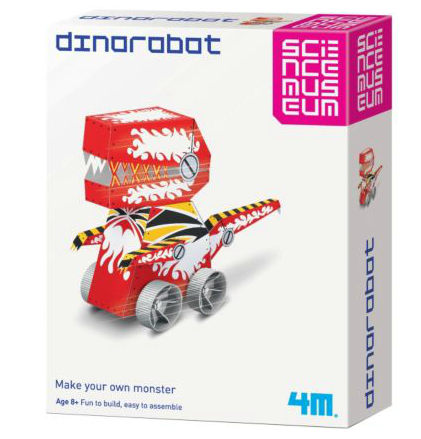
Science Museum Dinorobot at Boots
Whatever stage the children in your life are at,
Boots 3 for 2 range contains over 1000 carefully selected toys to cover a wide range of needs. It is the perfect way to make great savings and stock up on Christmas and birthday gifts.











